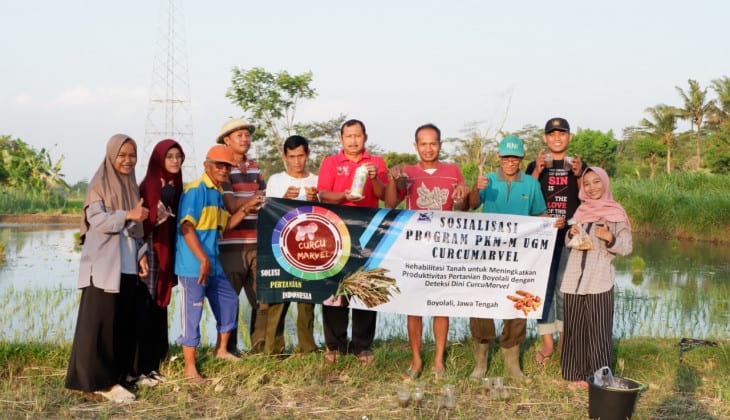
UGM students use turmeric to know the acidity level of agricultural land. This method is expected to help farmers increase the productivity of agricultural products.
“Non-neutral soil pH level is one of the reasons that decrease agricultural productivity. Turmeric has the ability to respond to soil pH levels by changing color,” said Arsyadani Tri, agricultural student, on Monday (17/6) at UGM.
In Boyolali regency, Central Java, rice production has decreased from 286,237 to 275,073 tons in 2017. In fact, from the size of 13,402 hectares of land in Boyolali, as much as 287,334 tons can be produced.
To overcome this problem, Asyadani together with fellow students Praditya Rizqi, Dwi Rahmasari, Annisa Kurniawati, and Eli Budia used turmeric as an indicator of the pH level of agricultural soils. The project is named CurcuMarvel which was designed for the Community Service Student Creativity Program under the guidance of Ratih Ineke Wati, M.Agr., Ph.D.
To know the soil pH level is by observing the turmeric color index. The index can also be used to know the soil pH level identification. Arsyadani explained detecting soil pH level using turmeric is simple. First, pieces of turmeric are inserted in a solution of soil samples taken at a number of different spots in an area of land. After 10 minutes, the turmeric is removed and compared with the one not kept in the soil sample mix.
If the turmeric color is pale, he said, it can be confirmed that the soil has a pH level below 7, which is acidic. If the color turns dark yellow, the pH level is above 7 which means alkaline. If the color remains the same, the soil is neutral.
“If the soil’s pH level is not neutral, the next thing to do is soil rehabilitation by giving feces and bionet organic fertilizer to neutralize the soil,” he concluded.



